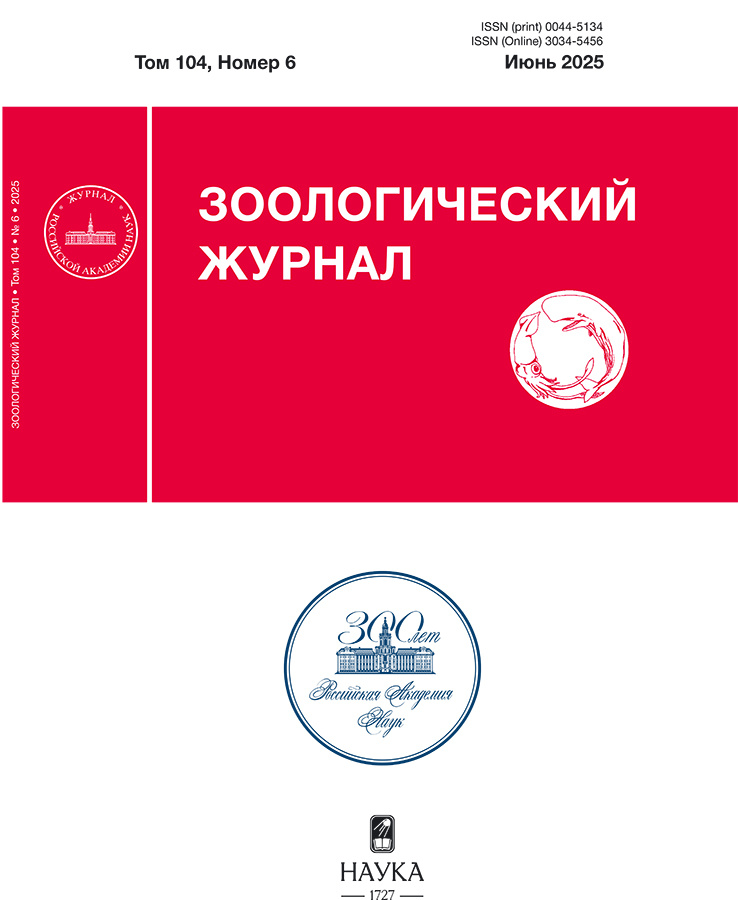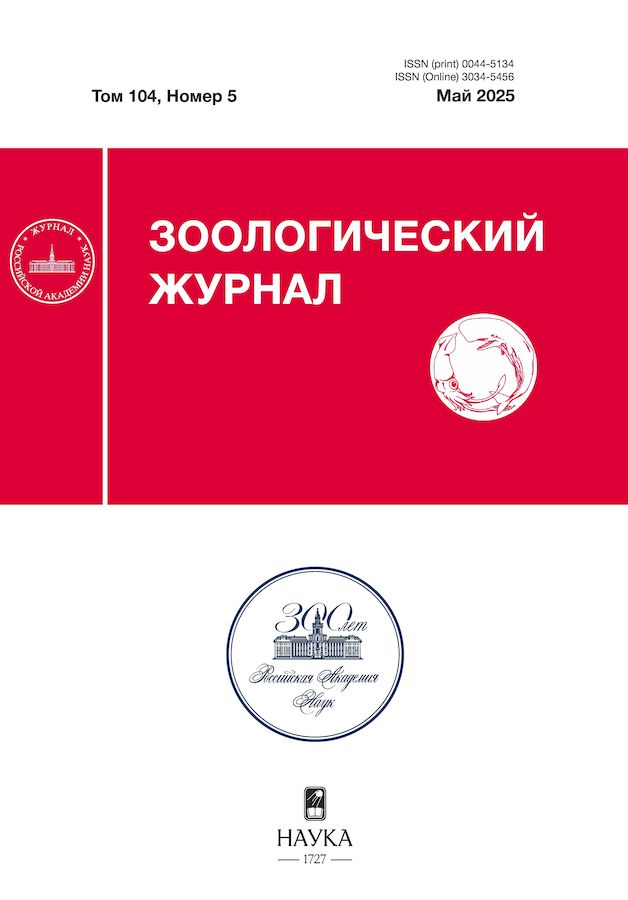Remote tracking of the spatio-temporal distribution of western taiga bean geese (Anser fabalis fabalis, Anseriformes, Aves) in Russia for improving the conservation strategy
- Authors: Volkov S.V.1, Rozenfeld S.B.1
-
Affiliations:
- A. N. Severtsov Institute of Ecology and Evolution, Russian Academy of Sciences
- Issue: Vol 104, No 5 (2025)
- Pages: 61-73
- Section: ARTICLES
- URL: https://permmedjournal.ru/0044-5134/article/view/684343
- DOI: https://doi.org/10.31857/S0044513425050078
- EDN: https://elibrary.ru/AUXAYJ
- ID: 684343
Cite item
Abstract
The Western Taiga Bean Goose subpopulation wintering in Europe has been shown to decline in the recent decades. At the same time, the population dynamics of most migratory birds largely depend on the quality of migratory stopover sites necessary to replenish energetic reserves. The migration ecology of the Western Taiga Bean Goose has been insufficiently well studied, being known: only in general terms, but the timing of migration, the places of many key stopovers in Russia have not described. Neither information on their conservation status nor the intensity and duration of their use by birds are available. Without this knowledge, no effective protection of any migrating population is possible to organize. We analyzed the dynamics and phenology of migrations, as well as the conservation status of stopover and pre-migration sites of the Western Taiga Bean Goose nesting in the forest zone of Western and Central Siberia and wintering in northern Germany and Poland, based on GPS-tracking. We used data from 45 completed spring migrations from 25 tagged birds and 36 completed autumn migrations from 20 birds over the period of 2019–2023. Only 15.3% stopovers are covered by the existing network of protected areas, where the geese spend only 19.2% time. The results of the study can be used to develop an effective strategy for the conservation during the period of migration. We propose a hunting ban and/or the creation of protected areas within the main key stopover sites.
Keywords
Full Text
About the authors
S. V. Volkov
A. N. Severtsov Institute of Ecology and Evolution, Russian Academy of Sciences
Author for correspondence.
Email: rozenfeldbro@mail.ru
Russian Federation, Moscow
S. B. Rozenfeld
A. N. Severtsov Institute of Ecology and Evolution, Russian Academy of Sciences
Email: rozenfeldbro@mail.ru
Russian Federation, Moscow
References
- Кищинский А.А., 1979. Миграция гуменника по данным кольцевания, полученным в СССР. Общие заключения // Миграции птиц Европы и Северной Азии. Аистообразные – Пластинчатоклювые. М.: Наука. С. 160–163.
- Лебедева М.И., 1979. Миграция гуменника по данным кольцевания, полученным в СССР // Миграции птиц Европы и Северной Азии. Аистообразные – Пластинчатоклювые. М.: Наука. С. 150–160.
- Литвин К.Е., 2014. Новые данные о миграциях гусей, гнездящихся в России. Обзор результатов дистанционного прослеживания // Казарка. Т. 17. С. 13–45.
- Розенфельд С.Б., Замятин Д.О., 2021. Западный лесной гуменник // Красная книга РФ. С. 573–575.
- Розенфельд С.Б., Стрельников Е.Г., Волков С.В., 2024. Маршруты миграции и ключевые остановки Anser fabalis fabalis (Anseriformes): анализ проблем охраны // Nature Conservation Research. Заповедная наука 2024. Т. 9. № 4. С. 80–92.
- Чернецов Н.С., 2023. Изучение миграций птиц сегодня: некоторые достижения и новые сложности // Труды Зоологического института РАН. Т. 327. № 4. С. 607– 622.
- Якушкин Г.Д., Кокорев Я.И., Колпащиков Л.А., 2012. Природные зоны и мир животных Таймыра. Белгород: ЛитКараВан. 276 с.
- Calabrese J.M., Fleming C.H., Noonan M.J., Dong X., 2021. ctmmweb: A Graphical User Interface for Autocorrelation‐Informed Home Range Estimation // Wildlife Society Bulletin. V. 45. P. 162–169. https://doi.org/10.1002/wsb.1154
- Chudzińska M.E., Nabe-Nielsen J., Nolet B.A., Madsen J., 2016. Foraging behaviour and fuel accumulation of capital breeders during spring migration as derived from a combination of satellite- and ground-based observations // Journal Avian Biology. V. 47. P. 563–574.
- Féret M., Gauthier G., Béchet A., Giroux J.-F., Hobson K.A., 2003. Effect of a spring hunt on nutrient storage by Greater Snow Geese in southern Québec // Journal of Wildlife Management. V 67. P. 796–807.
- Glahder C.M., Fox A.D., O’Connell M., Jespersen M., Madsen J., 2007. Eastward moult migration of non-breeding pink-footed geese (Anser brachyrhynchus) in Svalbard // Polar Reserch. V. 26. P. 31–36.
- Guo F., Buler J.J., Smolinsky J.A., Wilcove D.S., 2024. Seasonal patterns and protection status of stopover hotspots for migratory landbirds in the eastern United States // Current Biology. V. 34. P. 235–244.
- Heinicke T., 2018. Western tundra bean goose Anser fabalis rossicus // A global audit of the status and trends of Arctic and Northern Hemisphere goose populations (Component 2: Population accounts). Conservation of Arctic Flora and Fauna International Secretariat. Akureyri, Iceland. P. 10–13.
- Hijmans R.J., Williams E., Vennes C., Hijmans M.R.J., 2017. Package «geosphere» // Spherical Trigonometry. V. 1. P. 1–45.
- Jensen G., Baveco H., Johnson F., Madsen J., 2022. EGMP Population Status and Assessment Report 2022 // AEWA Technical Report. 56 p.
- Kortesalmi P., Pääkkönen S., Valkonen J.K., Nokelainen O., 2023. Bean Goose migration shows a long-term temporal shift to earlier spring, but not to later autumn migration in Finland // Ornis Fennica. V. 100. P. 61–68.
- Lei J., Jia Y., Zuo A., Zeng Q., Shi L., Zhou Y., Zhang H., Lu C., Lei G., Wen L., 2019. Bird satellite tracking revealed critical protection gaps in East Asian–Australasian Flyway // International Journal of Environmental Research and Public Health. V. 16. 1147.
- https://doi.org/10.3390/ijerph16071147с
- LeTourneux F., Grandmont T., Dulude-de Broin F., Martin M.C., Lefebvre J., Kato A., Bêty J., Gauthier G., Legagneux P., 2021. COVID19 induced reduction in human disturbance enhances fattening of an overabundant goose species // Biological Conservation. V. 255. 108968.
- Mainguy J., Bêty J., Gauthier G., Giroux J.-F., 2002. Are body condition and reproductive effort of laying Greater Snow Geese affected by the spring hunt? // Condor. V. 104. P. 156–161.
- Marjakangas A., Alhainen M., Fox A.D., Heinicke T., Madsen J., Nilsson L., Rozenfeld S., 2015. International Single Species Action Plan for the Conservation of the Taiga Bean Goose (Anser fabalis fabalis) // AEWA Technical Series. № 56. Bonn, Germany. 88 p.
- Nathan R., Monk C.T., Arlinghaus R., Adam T., Alós J., Assaf M., et al., 2022. Big-data approaches lead to an increased understanding of the ecology of animal movement // Science. V. 375: eabg1780.
- Nilsson C., Klaassen R.H.G., Alerstam T., 2013. Differences in speed and duration of bird migration between spring and autumn // American Naturalist. V. 181. P. 837–845.
- Oppel S., Beeli U.M., Grüebler M.U., van Bergen V.S., Kolbe M., Pfeiffer T., Scherler P., 2024. Extracting reproductive parameters from GPS tracking data for a nesting raptor in Europe // Journal of Avian Biology. e03246. https://doi.org/10.1111/jav.032462024
- Panov I.N., Litvin K.E., Ebbinge B.S., Rosenfeld S.B., 2022. Reasons for the reduction in the population of the Western Subspecies of the Bean Goose (Anser fabalis fabalis and Anser fabalis rossicus): what do the ringing data say? // Biology Bulletin. V. 49. P. 839–850.
- Pekarsky S., Schiffner I., Markin Y., Nathan R., 2021. Using movement ecology to evaluate the effectiveness of multiple human-wildlife conflict management practices // Biological Conservation. V. 262, 109306. https://doi.org/10.1016/j.biocon.2021.109306
- Piironen A., Paasivaara A., Laaksonen T., 2021. Birds of three worlds: moult migration to high Arctic expands a boreal-temperate flyway to a third biome // Movement Ecology. V. 9. 47. https://doi.org/10.1186/s40462-021-00284-4
- Pohlert T., 2018. Trend: non-parametric trend tests and change-point detection. R package version 1.1.5. https://CRAN.R-project.org/package=trend
- R Core Team, 2021. R: A Language and Environment for statistical computing. Vienna: R Foundation for Statistical Computing. Available from https://www.R-project.org
- Romano A., Garamszegi L.Z., Rubolini D., Ambrosini R., 2022. Temporal shifts in avian phenology across the circannual cycle in a rapidly changing climate: a global meta-analysis // Ecological Monographs. V. 93. е1552.
- Salomonsen F., 1968. The moult migration // Wildfowl. V. 19. P. 5–24.
- Schreven K.H., Stolz C., Madsen J., Nolet B.A., 2021. Nesting attempts and success of Arctic-breeding geese can be derived with high precision from accelerometry and GPS-tracking // Animal Biotelemetry. V. 9. P. 1–13.
- Sheehy J., Taylor C.M., Norris D.R., 2011. The importance of stopover habitat for developing effective conservation strategies for migratory animals // Journal Ornithology. V. 152. P. 161–168.
- Sokos C.K., Birtsas P.K., Connelly J.W., Papaspyropoulos K.G., 2013. Hunting of migratory birds: Disturbance intolerant or harvest tolerant? // Wildlife Biology. V. 19. P. 113–125.
- UNEP-WCMC, IUCN, 2023. Protected Planet: The World Database on Protected Areas (WDPA). UNEP-WCMC and IUCN, Cambridge, UK. URL: protectedplanet.net.
Supplementary files


















